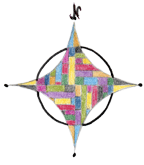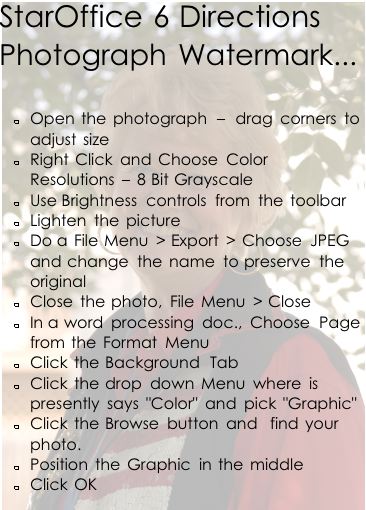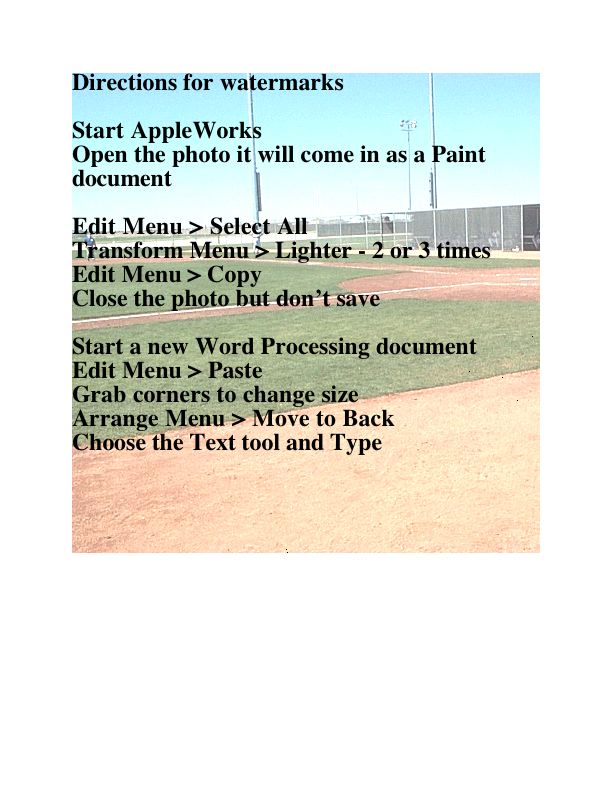 |
Biography Acrostic Poem |
Credits:
Linda Sulley
Thornton Elementary School
Thornton, CO
VITAL INFORMATION
Subject Matter:
Elementary, Language Arts (English)
Grades:
4-6
Software Application:
StarOffice Draw, AppleWorks, Microsoft Word
LESSON DESCRIPTION
Summary:
After researching a famous person, each student will write an acrostic poem, sharing information about their person. This poem will then be typed and superimposed on a picture of the researched person.
State & National Standards:
CO- Colorado Academic Standards
« Subject : Reading and Writing
« Standard 1: Students read and understand a variety of materials
The goal for students at all levels is that they know and can use strategies--various ways of unlocking the meaning of words and larger blocks of text--to become successful readers. The strategies are applied in increasingly difficult reading material at each grade level. At all levels, students should be challenged to read literature and other materials that stimulate their interests and intellectual abilities. Reading from a wide variety of texts, both assigned and student selected, provides experience in gaining information and pleasure from diverse forms and perspectives.
« Grade/Level : CO- Colorado Academic Standards
« Grade/Level : Grades K-4
Performance Indicator : using a full range of
strategies to comprehend materials such as directions, nonfiction material,
rhymes and poems, and stories
« Standard 5: Students read to
locate, select, and make use of relevant information from a variety of media,
reference, and technological sources
In this age of information and technology, people need reading and information-retrieval skills that will enable them to access facts, images, and text from many sources. The sheer volume of data makes it necessary for information seekers to be able to wade through a maze of facts, figures, and images, and to identify what is useful and relevant. Knowing how to locate, evaluate, and make use of an ever-increasing amount of information demands a broader repertoire of reading strategies. This implies an expanded definition of literacy that includes reading for information in a technological age. Students need to become discerning consumers of information.
« Grade/Level : CO- Colorado Academic Standards
« Grade/Level : Grades K-4
Performance Indicator : taking notes, outlining, and identifying main ideas in resource materials
Performance Indicator : sorting information as it relates to a specific topic or purpose
Performance Indicator : giving credit for borrowed information by telling or listing sources
Local Standards:
Instructional Technology Skills Continuum
Standard #2: Students use technology tools to enhance learning, increase productivity, and promote creativity.
- Begins using touch typing with home keys.
- Independently uses spell check and thesaurus.
- Changes character formatting such as font color.
- Utilizes different document layouts. (i.e. newsletter, etc.)
- Changes document formatting such as: alignment, bulleted/numbered lists, borders, line spacing, margins, etc.
- Inserts a graphic into a word-processed document.
Standard #3: Students use technology tools to enhance learning, increase productivity, and promote creativity.
- Uses import/export and copy/paste features to create a single document using more than one program.
Lesson Outcomes:
The students will have learned about an important person and what his/her contributions were. This information will be shared accurately and creatively in an acrostic poem, along with a picture.
Assessment:
The assessment will focus on the content of the information about the researched person.
Assessment/Rubrics:
Rubrics:
CLASSROOM & TIME MANAGEMENT
Student Prerequisites:
In anticipation of this lesson, the students will all have researched a person as well as have written the acrostic poem.
Lesson Preparation:
Use the Yahooligans category for biographies to find appropriate sites for the students to use for their research.
http://www.yahooligans.com/School_Bell/Social_Studies/History/Biographies/
Time Frame:
3 class periods. 45 Min. per class.
Implementation Steps:
1. Discuss as a class what makes a person important enough to deserve a biography.
2. Select a person to study.
3. Read and take notes.
4. Use notes to write an acrostic poem.
5. Locate picture from the Internet.
6. Download and insert into your StarOffice draw document
7. In graphics mode with picture selected change from default to watermark.
8. Superimpose text over picture.
RESOURCES
Lesson Resources:
Multiple biography books.
Web sources featuring pictures of famous people. ® Yahooligans Biography Category http://www.yahooligans.com/School_Bell/Social_Studies/History/Biographies/
Directions for adding watermarks to StarOffice 6 documents.
Directions for adding watermarks to AppleWorks documents.
STUDENT PRODUCT(S)
Product(s) Description:
A picture of the researched person will fill the page in the back and the poem will be on top of the picture, with the font color adjusted for visibility.
Attachments:
1. Anne Frank
REFLECTION
Comments:
Continue to stress the importance of recognizing the accomplishments and achievements of the person the student studied. When they were presenting their projects, some students had trouble explaining in one or two sentences why their person was famous and still studied.
A separate lesson needs to be taught on using the spell check function. A few students were such poor spellers that spell check could offer no suggestions. Also, the spell check function does not show you where in the sentence the error occurred so corrections need to be re-taught. Using the contextual spell checking feature (red sqiggles) is a good idea for introducing the use of spell check.

-
Developed under a grant from Sun Microsystems, Inc. Open Gateways at Mountain View
Elementary School by Steve Gandy, Technology Coordinator - mountain.adams12.org/TISS
© 2003


